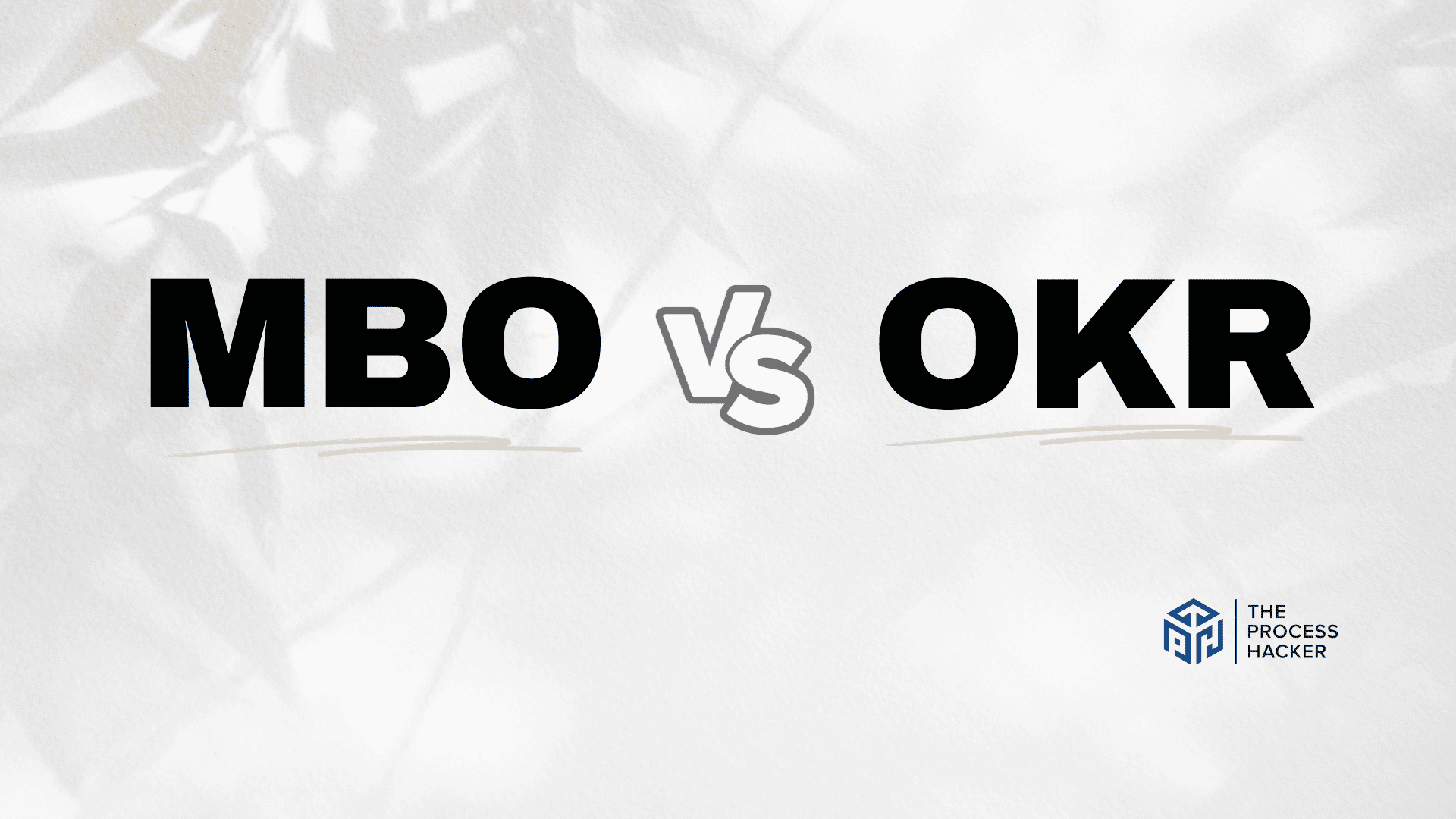MBO vs OKR: Create Specific and Clear Objectives for Your Business
Are you looking for the best way to set achievable goals and objectives that drive success?
You’re not alone. Many companies struggle to create specific, measurable, and actionable objectives they can be proud of reaching.
But it doesn’t have to be so complicated! This guide is here to help you explore practical solutions and develop strategies that work for your business.
Not only will you enjoy the clarity of setting well-defined objectives within a short amount of time, but you will also feel secure knowing all your hard work is directed towards clearly defined goals.
I will provide you with all the information you need, tailored precisely for each team – keeping everybody on track while enabling fast growth & continual success!
Ready? Let’s get this MBO vs OKR guide started!
What Is Management By Objectives (MBO)?
Management By Objectives (MBO) is a strategic management strategy that improves performance by clearly outlining objectives that management and employees agree on. MBO ensures that everyone in your organization knows and works toward their goals.
Starting with high-level organizational objectives is customary in MBO. These are then broken down into department, team, and individual goals. You must make these goals measurable and time-bound to track progress and achievement.
MBO works well because it aligns and enhances your organization. Clear goals help everyone understand their role in the organization and how their efforts contribute.
Why Should You Use MBO?
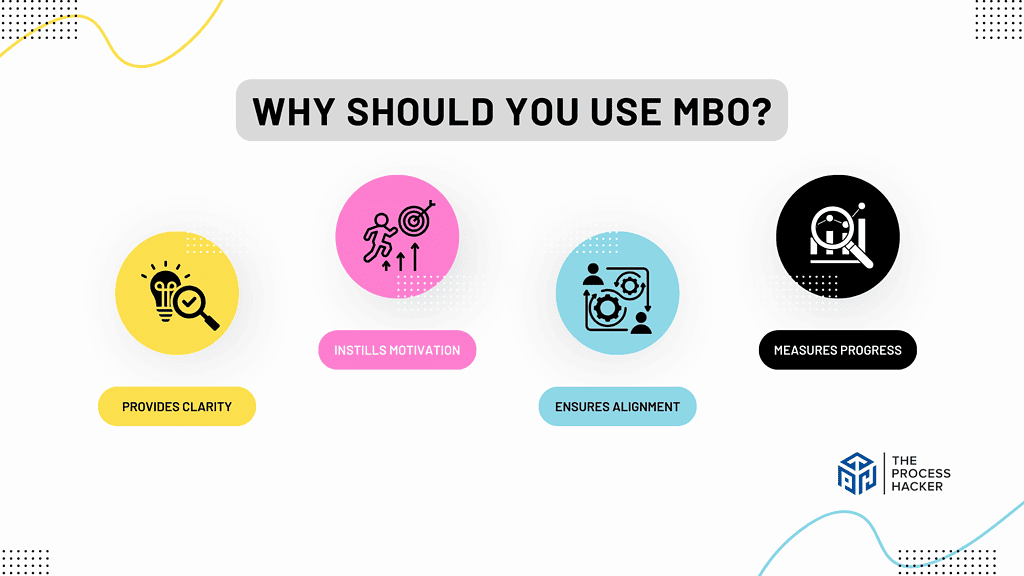
The need for a structured and effective method for setting and achieving business objectives has never been greater. In today’s fast-paced and competitive business environment, having clear, concise, and achievable goals is key to measuring performance and staying ahead.
Here are some reasons why MBO is important and relevant:
- Provides Clarity: Defines precise goals for each employee, ensuring everyone understands their responsibilities and targets.
- Instills Motivation: Increases motivation and commitment by involving employees in goal-setting.
- Ensures Alignment: Helps align individual goals with the overall business objectives, creating a cohesive strategy.
- Measures Progress: Track progress towards objectives, providing a basis for feedback and performance reviews.
But how do you ensure you use the right method to set and manage your business objectives?
That’s where MBO comes in as an ideal solution. It provides a clear path toward achieving your business goals, fosters transparency, encourages participation, and promotes accountability among your team members.
If you want a method to help your business grow and succeed, MBO is your go-to option.
What Are Objectives and Key Results (OKR)?
Objectives and Key Results (OKR) is a goal-setting framework that helps you establish and track clear, measurable goals in your organization. This approach involves setting high-level objectives and defining specific, quantifiable, vital results to measure progress.
In using OKR, you first define your objectives, which are qualitative and inspirational goals. These objectives should align with your organization’s vision and should be ambitious yet achievable.
Then, for each objective, you set key results – these are quantitative metrics that clearly indicate progress towards the objective. The key results should be specific, time-bound, and challenging but realistic.
The OKR framework is designed to be agile, encouraging regular review and adaptation. This means you can adjust your overarching company objectives and key results as needed to respond to changes in your business environment or strategic direction.
By implementing OKRs, you’re not just setting your own goals but creating a dynamic system of continuous improvement, ensuring that your organization remains focused and adaptable in a fast-paced business world.
Why Should You Use OKRs?
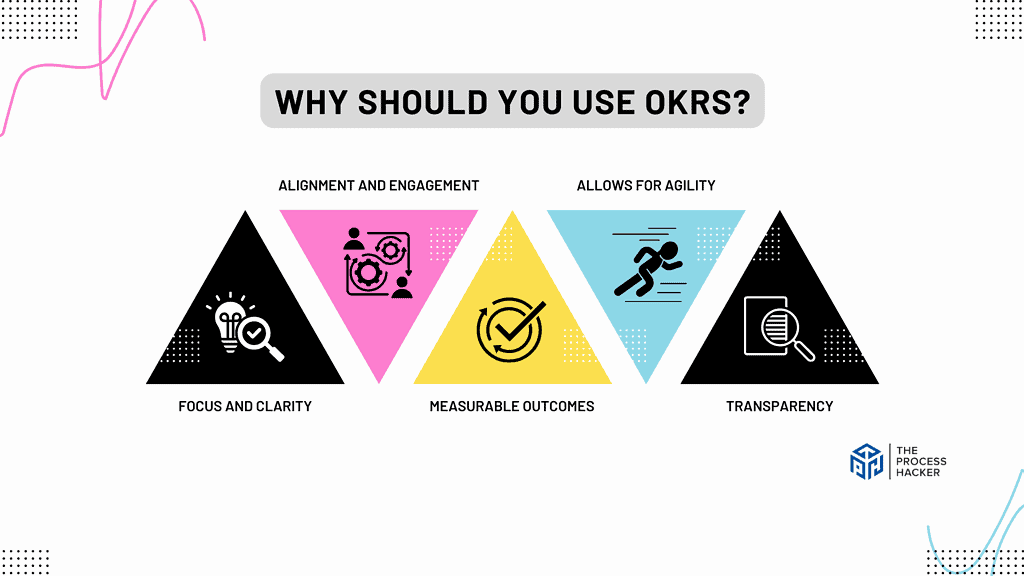
Objectives and Key Results (OKRs) are a powerful way to align and mobilize your organization toward its strategic objectives.
By adopting OKRs, you’re not just setting goals; you’re creating a culture of accountability and excellence, ensuring that every team member understands and contributes to the overall success of your business.
- Focus and Clarity: OKRs help you concentrate on what matters, ensuring your efforts align with your strategic goals.
- Alignment and Engagement: You foster alignment and engagement across your organization by involving your team in the OKR-setting process.
- Measurable Outcomes: The emphasis on critical results provides clear, measurable outcomes, making it easier to track progress.
- Allows for Agility: The OKR framework allows for flexibility and adaptability, enabling you to respond quickly to changes in the business environment.
- Transparency: This framework promotes transparency, allowing everyone in your organization to see the progress towards shared objectives.
Adopting an OKRs focus is more than just a methodological choice; it’s a strategic decision that sets your business up for success. By clearly defining what you want to achieve (objectives) and how you will measure performance and progress (key results), you establish a clear roadmap for your organization.
OKRs enable you to set ambitious goals while keeping your team aligned, motivated, and focused on the most important results. This approach drives performance and fosters a culture of continuous improvement, making it an ideal solution for dynamic and forward-thinking businesses.
MBO vs OKR: What are the key differences?
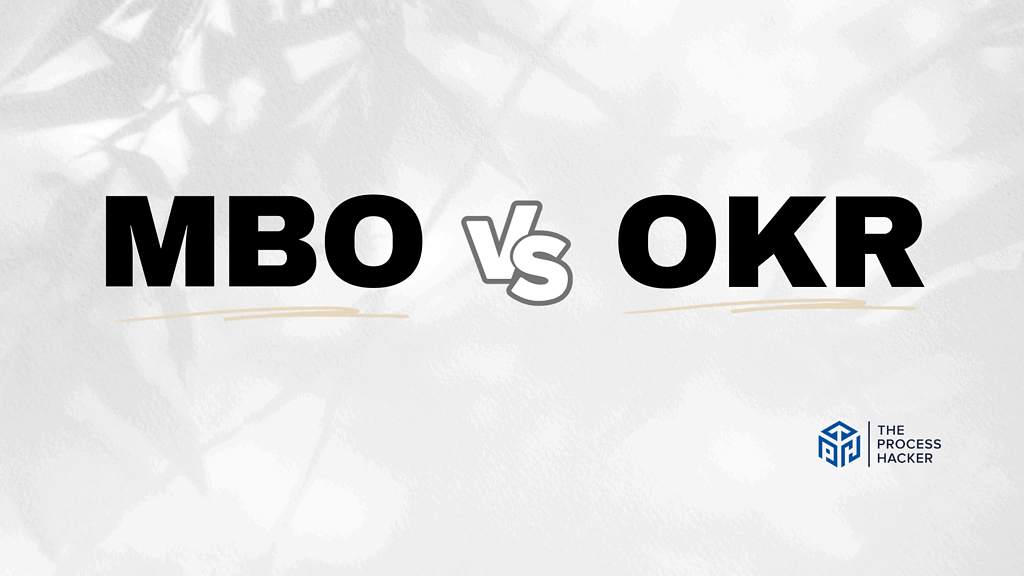
Understanding the differences between Management By Objectives (MBO) and Objectives and Key Results (OKR) is crucial for choosing the right approach for your organization.
Both frameworks aim to improve performance through clear goal setting but differ in methodology, focus, and execution.
| Aspect | MBOs | OKRs |
|---|---|---|
| Focus | Sets individual goals aligned with organizational objectives. | Sets company-wide objectives with specific, measurable key results. |
| Scope & Scale | Often, annual goals focus on individual performance and development. | Usually set quarterly, more agile, and adaptable to changes. |
| Measurement | Goals are often qualitative and broader. | Requires specific, quantifiable key results for concrete tracking. |
| Involvement | Top-down approach: The manager sets goals for employees. | Encourages collaboration and transparency; involves the entire team in goal-setting. |
| Flexibility | More static once set as there are less frequent reviews. | Greater flexibility with frequent reviews and adjustments. |
Choosing between OKR and MBO depends on your organization’s size, culture, and the nature of your goal management framework. If you prefer a structured approach emphasizing individual performance and development, MBO might be more suitable.
However, if you’re looking for a dynamic, collaborative, and transparent framework that aligns the entire organization toward common objectives, OKRs could be a better fit. Your decision should be based on what aligns best with your strategic vision and operational style.
How to Use MBO for Company Objectives
Implementing MBO in your organization is a strategic process that involves more than just setting goals; it’s about creating a cohesive system where you and your team work together towards common objectives.
Your unique approach to MBO should be tailored to align with your company’s culture and objectives, ensuring that each team member understands their role in the bigger picture.
Remember that the effectiveness of this approach lies in its ability to align and motivate your team. The following tutorial will guide you through these steps, ensuring you can implement MBO to meet your company’s objectives and foster a culture of shared success and continuous improvement.
Vision Alignment
Vision Alignment is crucial because it sets the tone and direction for all subsequent objectives, ensuring that every effort contributes to the overarching purpose of your company. To execute Vision Alignment, follow these steps:
- Review Your Company’s Vision and Mission
- Communicate the Vision
- Link Your Big Rocks to the Vision
- Seek Input and Align Understanding
- Document the Aligned Objectives
Successfully executing Vision Alignment ensures that all subsequent objectives are strategically sound and resonate with and motivate your team, as they can see how their work directly contributes to the company’s broader goals.
SMART Goal Setting
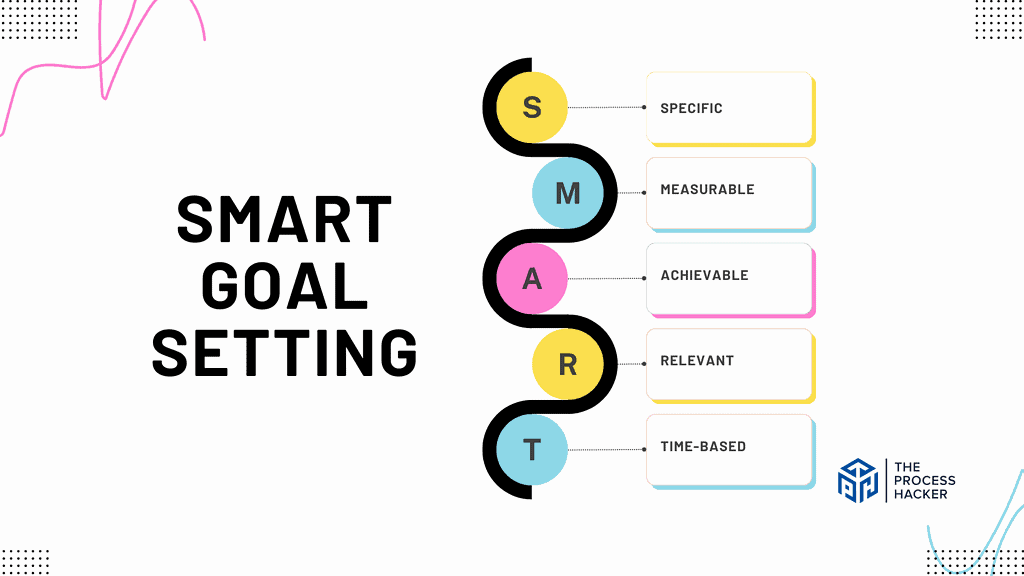
After aligning your objectives with your company’s vision, which is how your company defines success. From Start Finishing, Charlie Gilkey defines SMART as Simple, Meaningful, Actionable, Relevant, and Trackable. This framework helps you create clear, actionable, timebound goals that are aligned with your overall business strategy.
To execute SMART Goal Setting, engage your team, document your goals clearly, and review and adjust if necessary. Setting SMART goals encourages innovation and creates a clear and structured path towards achieving your company’s objectives.
Collaborative Planning
Collaborative Planning involves engaging your team in goal-setting, ensuring everyone has a stake in the organization’s success. You want to allow team members to participate in meetings and express their opinions.
Work with your team to match objectives to their skills and experience during planning sessions. After finalizing the goals, document them clearly and share this information with the team. This documentation should detail how each goal contributes to the broader company objectives and each team member’s role in achieving them.
Progress Tracking
Progress Tracking ensures that goals are pursued and achieved. Create a basic yet effective mechanism to track target progress. This could incorporate spreadsheets, project management software, or progress reports. It should be easy to update and review, showing progress toward goals.
Regularly check progress with monthly or quarterly meetings. Check milestones, discuss issues, and compare performance to goal KPIs at these reviews. These meetings should be open for criticism and revisions.
And be ready to change your goals based on the insights gathered during your progress reviews. If specific objectives are consistently not being met, take time to understand why and adjust the goals or strategies accordingly.
Feedback Loop
The Feedback Loop is integral and involves regularly collecting and giving feedback on performance related to the set objectives. This step is crucial for maintaining open communication, addressing challenges, and facilitating continuous improvement.
By incorporating a robust Feedback Loop in your MBO process, you enhance communication, foster a positive culture of continuous improvement, and ensure that the goals remain relevant and achievable. This step not only helps in achieving business objectives but also in developing and motivating your team.
Performance Review
Performance Review is a critical stage where you evaluate individual and team performance against the set objectives. You can conduct effective performance reviews with regular meetings that establish goals and expectations for an employee.
Ensure that Performance Reviews are thorough, fair, and productive to contribute to your team’s continuous growth and development and align individual achievements with your organization’s objectives.
How to Use OKRs for Company Goals
Implementing OKRs aligns your team’s efforts with the company’s most critical goals. This approach is not just about setting ambitious targets; it’s about creating a rhythm of continuous progress and adaptation.
Your unique application of writing OKRs should emphasize clarity, engagement, and agility, ensuring that every team member is focused and aligned with the company’s strategic direction.
Define Inspiring Objectives
Start by setting ambitious yet achievable objectives. These should inspire your team and provide clear direction for what you want to accomplish.
Aim for the moon, but keep one foot on Earth. Your objectives should be ambitious enough to stretch your team’s comfort zone and unleash their hidden potential. However, they should also be realistic and achievable with dedicated effort. Don’t discourage your team with pie-in-the-sky aspirations; inspire them with achievable moonshots.
Example:
Instead of: “Increase website traffic by 20% in Q1.”
Go for: “Become the go-to online destination for [your industry] by attracting 1 million unique visitors per month within the next quarter.”
This objective is specific, ambitious, impactful, and memorable. It clearly defines the goal, sets a challenging target, and evokes the excitement of becoming the industry leader. That’s the kind of objective that gets hearts racing and hands working!
So, unleash your inner wordsmith, tap into your team’s aspirations, craft objectives that define your goals, and ignite the fire of purpose within every team member. Remember, with great objectives come great possibilities!
Identify Measurable Key Results
Establish specific, quantifiable key results for each objective. These are the metrics that will indicate whether you are achieving your objectives.
Forget “improve customer satisfaction” or “increase brand awareness.” These lack the precision you need. Instead, define concrete metrics that leave no room for ambiguity. Think percentage points, dollar figures, specific customer engagement rates – anything that gives you a clear, objective measure of progress.
Example:
Objective: Become the go-to online destination for [your industry] by attracting 1 million unique visitors per month within the next quarter.
Key Results:
- Increase website traffic by 20% month-over-month over the next three months.
- Generate 10,000 leads through website forms by the end of Q1.
- Boost social media engagement by 50% across all platforms by Q1 end.
- Achieve a Net Promoter Score (NPS) of 70 or higher by Q1 end.
These key results offer a multifaceted view of progress, covering traffic, lead generation, engagement, and customer satisfaction. They’re specific, challenging, and directly contribute to achieving the ambitious objective. Now, with this compass in hand, your team can embark on their journey to the peak of online success!
Engage in a Collaborative Goal Setting
Involve your team in setting OKRs. This collaboration ensures buy-in and leverages your team’s diverse perspectives and expertise.
Your team isn’t just a collection of hands; it’s a brain trust brimming with diverse perspectives and unique expertise. By involving them in shaping the OKRs, you tap into that collective genius, harnessing their insights and experiences to forge goals that are not only ambitious but achievable.
Example:
Instead of setting the objective “Increase customer satisfaction by 10%” behind closed doors, hold a brainstorming session with your team. Ask them:
- What are the biggest pain points our customers face?
- What would make their experience exceptional?
- How can we improve customer satisfaction by 10%?
This dialogue allows you to gather valuable insights, identify actionable strategies, and craft an objective everyone is invested in achieving.
Implement a Regular Review of Rhythm
Establish a cadence for reviewing progress, such as bi-weekly or monthly check-ins. This keeps everyone accountable and allows for timely adjustments.
Instead of waiting for the quarter to end to review your OKRs, schedule bi-weekly team meetings to discuss progress, celebrate achievements, and identify potential roadblocks. These regular jam sessions keep everyone on the same page, allow for agile adjustments, and ensure your OKRs remain a vibrant soundtrack to your business success.
This regular review rhythm ensures that your team remains focused and aligned with the OKR. It allows you to promptly identify issues and pivot strategies, increasing the likelihood of achieving your objectives.
Furthermore, these reviews foster a culture of transparency and continuous improvement, where your team can openly share insights and collaborate effectively towards common goals.
Adapt and Evolve
Be prepared to revise your OKRs based on the review outcomes and any changes in the business environment. OKRs are designed to be flexible, accommodating new insights and situations.
For more information on OKRs, check out the book Radical Focus by Christina Wodtke. It provides an in-depth overview of Objectives and Key Results and how to use them to drive business growth.
Tips for Creating Specific and Clear Objectives
Creating specific and clear objectives is an art that requires practice and precision. While the steps above provide a comprehensive guide, here are a few additional tips to help you in this process:
- Use Positive Language: When setting objectives, use positive language that inspires action and motivation. Instead of using phrases like “don’t do…” or “avoid…” frame your objectives to encourage positive behavior. For example, instead of saying, “Don’t miss deadlines,” you could say, “Submit all projects on time.”
- Make it Collaborative: Involve your team in the objective-setting process. This ensures buy-in and promotes a sense of ownership among team members. Employees are likely to be more committed to achieving their objectives by having a say in them.
- Be Realistic Yet Ambitious: While setting challenging objectives to push your team is important, ensuring they’re realistic is equally crucial. Unrealistic goals can lead to frustration and demotivation. Strike a balance between ambition and achievability for the best results.
The key to setting effective objectives lies in clarity and specificity. The clearer and more specific the objective, the easier for your team to understand what is expected and how success will be measured.
Taking it to the Next Level: How to Go Beyond Creating Specific and Clear Objectives for Your Business
Above and beyond MBO and OKR, you must integrate these goals into your corporate culture and processes. This next stage makes goal-setting a regular component of your business process.
This procedure can be improved by using sophisticated technology and techniques. Data analytics can help you set more accurate goals by providing deeper insights into your performance measures.
Additionally, project management and collaboration tools can streamline the tracking and reviewing of objectives, making the process more efficient and transparent across the organization.
Another approach is to foster a culture of continuous learning and development. Encourage your team to regularly engage in professional development activities that align with their individual and team objectives. This not only aids in achieving current goals but also prepares your team for future challenges, promoting growth and adaptability.
Lastly, consider extending the principles of MBO and OKR beyond mere goal setting into strategic planning and decision-making processes. By doing so, you ensure that every decision made and every strategy implemented directly contribute to attaining your set objectives.
This holistic approach ensures that your goal-setting framework is not operating in isolation but is integral to your organization’s journey toward success and excellence.
Alternative Methods: KPIs
Key Performance Indicators (KPIs) are a simple alternative to setting objectives. KPIs are measurable values demonstrating how effectively a company or individual achieves critical business objectives.
They operate on different levels to monitor progress towards overall goals and specific processes.
Quantitative and Qualitative KPIs
KPIs can be quantitative (based on numerical metrics) or qualitative (based on subjective characteristics and observations). For instance, a sales team might use a quantitative KPI, like the number of deals closed in a month, while a customer service team could use a qualitative KPI, such as customer satisfaction ratings.
Real-time Monitoring and Adjustments
One significant advantage of KPIs is that they allow for real-time progress monitoring. This means that if you need to catch up to meet your objectives, you can make adjustments immediately rather than waiting until the end of a project or period to evaluate success.
Balanced Scorecard Approach
Another popular alternative is the Balanced Scorecard approach, which combines financial measures with performance metrics related to customers, internal processes, and learning and growth. This offers a more holistic view of an organization’s performance.
Final Thoughts on MBO vs OKR
MBO and OKR offer robust frameworks for setting and achieving business goals, each with unique strengths.
- MBO is ideal for aligning individual goals with the organization’s objectives, focusing on personal performance and development.
- In contrast, OKR encourages setting ambitious company-wide objectives with measurable vital results, promoting transparency and collaboration.
The choice between MBO and OKR depends on your organization’s culture, structure, and strategic priorities. MBO might be more suitable for organizations prioritizing individual performance and detailed planning, while OKR could be preferable for those seeking agility and alignment across larger business teams or departments.
As someone deeply versed in strategic planning and organizational development, my insights are drawn from extensive experience and a keen understanding of different business environments.
The knowledge shared in this tutorial is designed to equip you with the tools and understanding necessary to make informed decisions about which framework best suits your needs.
Whatever you choose between OKR vs MBO or a combination of different methods like KPIs, the key is to ensure that your goal-oriented management approach and performance management are tailored to your organization’s unique context and objectives.

